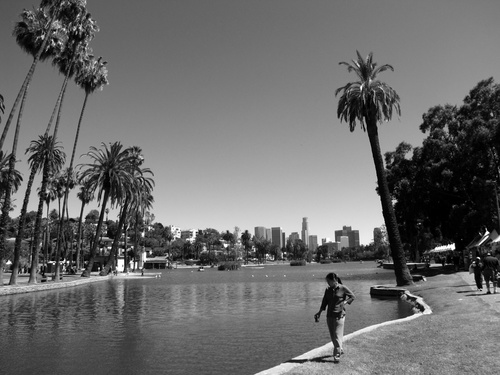
The Complete Incomplete Los Angeles Guide
Friends often ask what they should see and do in Los Angeles. This is always tough to answer because the city constantly evolves, as do my own tastes, and that doesn't take into account the unique preferences of the asker. Nevertheless, when a family of Austrian friends planned to stop in Los Angeles last summer, I compiled a list of suggestions based on their interests (seeing the beach, experiencing iconic architecture, and viewing landmarks). With a few changes and updates, I thought I'd share it with you.
New rankings beg question: what makes Portland sustainable?
Can our ability to live healthily, prosperously and durably over multiple generations (my rough definition of sustainability) be gauged by simply totaling up new construction and how many gizmos it features, dollars spent, and the new kilowatt-hour reducing technology we build? Or should our analysis be a little more complex? Should we explore our actual behaviors, i.e., the actual effectiveness of the programs we incent, the way our buildings - LEED or not - get used and the type of demands we place on our power grid? Wouldn't that be the real measure of sustainability?
My un-scientific, un-journalistic assumption is that Portland would probably end up pretty far ahead on that sort of scale as well, but we -- everyone, but particularly journalists reporting on the environment -- might be well served by asking these sort of questions.
Where should green planning efforts come from?
Hundreds of urban planners, architects, developers, environmentalists, entrepreneurs and policymakers danced around this question last week as they convened on Portland for the second annual Ecodistricts Summit.
Hosted by the Portland Sustainability Institute (PoSI), the event complements a maturing experiment to make five of the Oregon metropolis's neighborhoods into "Ecodistricts," neighborhoods designed to be more sustainable.

Los Angeles in Your Eyes
How would you give a tour of Los Angeles with only a short time to do so? What would you show? Why? What do you think is quintessential L.A.? What can be ignored? Do you have a universal trip you'd share with every visitor or are there certain ones you'd reserve for certain people? Would there be a specific flow to your tour? Would you use the strict geographical boundaries of the city, or would yours be more a tour of Southern California with Los Angeles as its center of gravity? If you're not from Los Angeles, what would you want to see here if you only had a few days to do so? What is this place to you? Why would you want to visit? What type of tour would you want?
Search Posts
Archived Posts
- March 2024 1
- October 2023 1
- October 2022 2
- December 2017 1
- April 2017 1
- February 2017 1
- January 2017 1
- November 2016 2
- August 2016 2
- July 2016 2
- December 2015 1
- November 2015 2
- September 2015 3
- April 2015 1
- March 2015 1
- February 2015 1
- January 2015 4
- August 2014 1
- May 2014 1
- April 2014 4
- March 2014 6
- December 2013 1
- November 2013 1
- August 2013 3
- May 2013 2
- April 2013 1
- December 2012 3
- November 2012 2
- October 2012 2
- September 2012 3
- August 2012 6
- July 2012 4
- June 2012 1
- May 2012 6
- April 2012 2
- March 2012 3
- January 2012 2
- September 2011 2
- August 2011 2
- July 2011 1
- May 2011 9
- April 2011 2
- March 2011 1
- January 2011 2
- November 2010 1
- October 2010 1
- August 2010 3
- July 2010 1
- June 2010 1
- May 2010 12
- April 2010 2
- March 2010 1
- January 2010 1
- December 2009 1
- November 2009 4
- October 2009 2
- September 2009 2
- August 2009 1
- July 2009 1
- June 2009 4
- May 2009 1
- March 2009 5
- February 2009 4